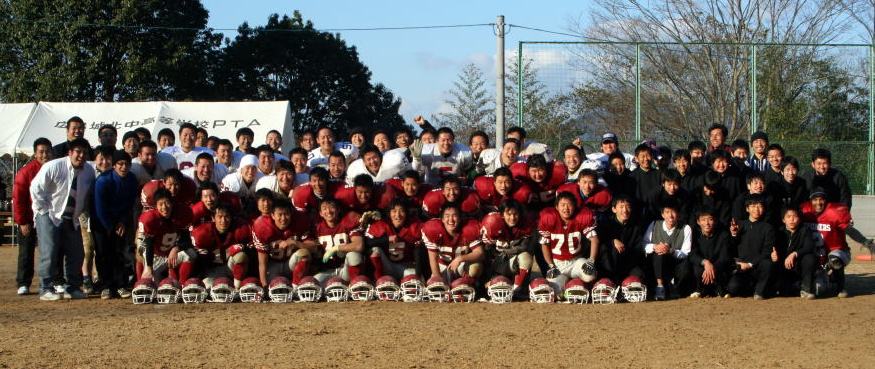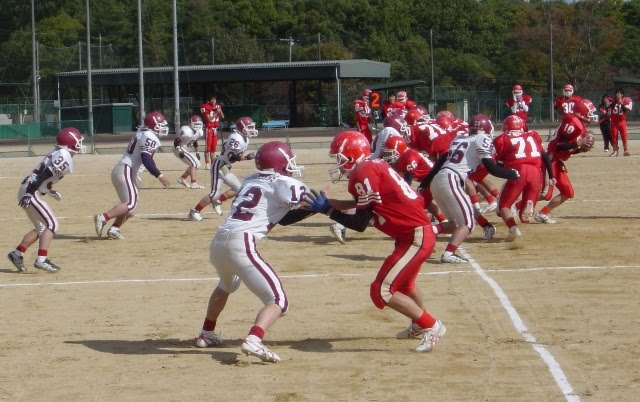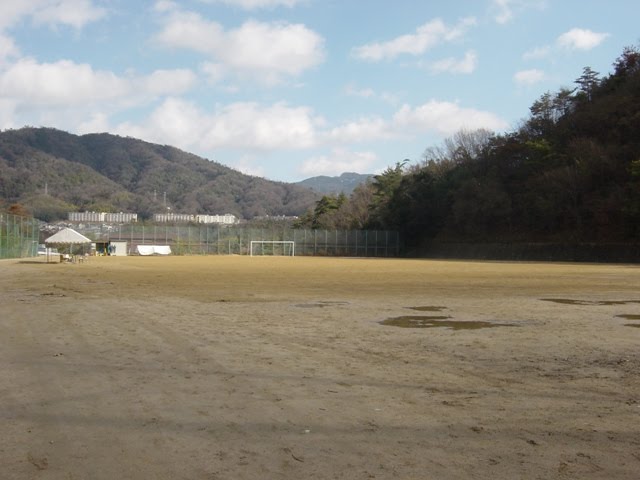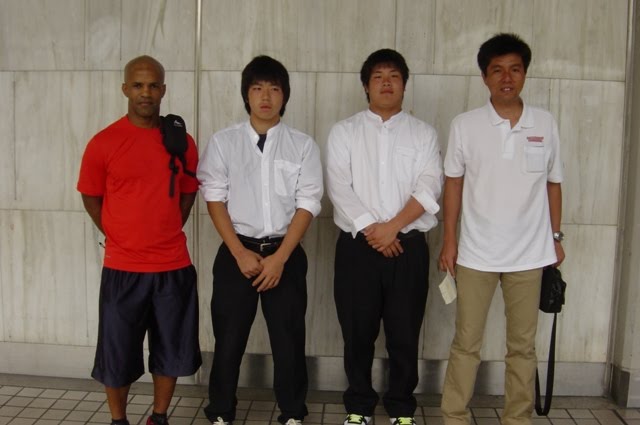The Johoku Longhorns ...in the Dirt
Kyoto, Japan (2009)
 |
| The rivalry, Sotoku vs Johoku ..
Johoku and Sotoku are the only two high school football programs in the westernmost part of the main island of Honshu, Japan. Both schools are located in the city of Hiroshima and are separated by less than two miles. Sotoku is a private, sports oriented, school that has been playing American football since 1951. Johoku is also private; however, the focus there is primarily academic. Johoku started their football program in 1974. The next closest high school football team is about two-hundred miles northeast of Hiroshima in the Kansai area.
.
The majority of the high school, and college football, teams in Japan are disproportionately clustered in and around the Kansai and Tokyo areas. Other than Johoku and Sotoku, there are no high school football teams west of the Kansai area. Currently, there are no high school football teams on the main islands of Kyushu, or Shikoku, either. I've had the privilege of coaching at both Hiroshima schools; I coached at Johoku from 2005 until 2010, and at Sotoku from 2010 through early 2016.
|
.
.
 |
| The Fighting Ducks and your's truly in the dirt (2011) Hiroshima, Japan |
.
.
There are multiple challenges to overcome when there's only one other football team within 200 miles. Naturally, you'd be considered rivals.
.
.
.
↓.... .↓
.
現在、高校アメリカンフットボールは関西地区で約40校、関東地区で約60校の学校が活動しているものの、全国的な普及には繋がっておらず高校での競技人口は未だ少ないのが現状である。しかしながら大学では、ほとんどの学校で活動され、中には3万人以上の観客を集めるカードもあるほどメジャーな花形競技である。そのため進学後、どの大学でも高校での競技経験は多いに優遇され、さらには大舞台で活躍するチャンスを勝ち獲ることも夢ではありません。
.
.
.
.
.
.
.
.
.
.
.
The Sotoku Fighting Ducks
(1951) Hiroshima, Japan
.
Early Football In Japan...
.
The history of American Football in Japan goes back to 1934 when Paul Rusch, a teacher and missionary from Kentucky (USA), came to Japan in 1925 to help rebuild the Yokohama and Tokyo YMCAs that were destroyed in the great 1923 earthquake. George Marshall, an athletic teacher at Tokyo based Rikkyo University, and two military attaches at the US embassy, Alexander George and Merritt Booth, helped to form the first football teams at three universities in Tokyo (Waseda, Meiji, Rikkyo). In November of 1934 the first football game was played between an all-star team of the three Tokyo universities and a team of the Yokohama Country and Athletic Club consisting of Americans and British living in Japan. The Japanese college team won the game.
American Football quickly gained popularity in Japan. In 1937 a game between college all-star teams from eastern and western Japan drew a crowd of about 25,000 spectators. The reason for the success of the rough North American game in mild-mannered Japan might have been that American Football offered a combination of power, technical precision, discipline and team spirit that was hard to find in other sports These characteristics also matched well with traditional Japanese values.
.
Post War Growth...
.
During World War II (1939 - 1945) American Football in Japan came to a halt. In 1946, during the Allied Occupation of Japan, Peter Okada was a young serviceman stationed in Osaka with the 108th Military Government Team. He observed reforms in the Japanese high school sports system. Kendo and judo had been banned from schools because it was believed that those sports promoted militarism. Okada noticed the Japanese morale was suffering so he made a proposal to introduce the American sport of football. He borrowed a few footballs from the Army and on his days off began teaching touch football to the students at Toyonaka and Ikeda High Schools. Japanese students learned the game quickly. Today more than 17,000 players participating in competition for about 400 teams. The winner of the Japanese High School National Championship game is awarded the Peter Okada Trophy.
.
.
.
..
.
.
.
.
.
.
For the details of my coaching experience in Western Japan click the link below...
..
.
.
.
Sotoku high School alumni game
(2012) Hiroshima, Japan
.
.
..
.

























































